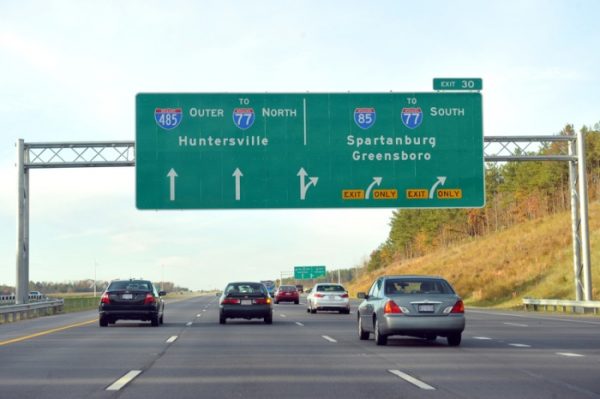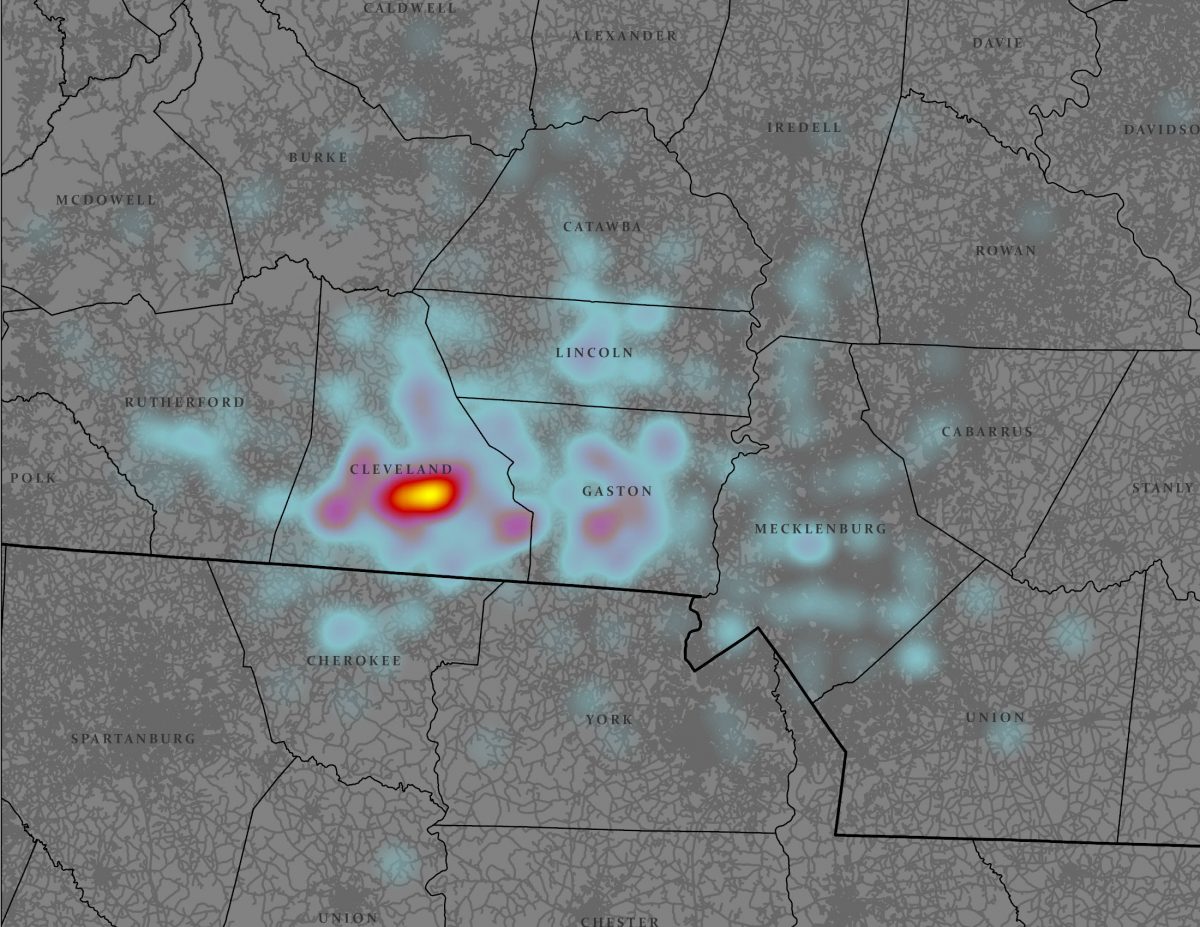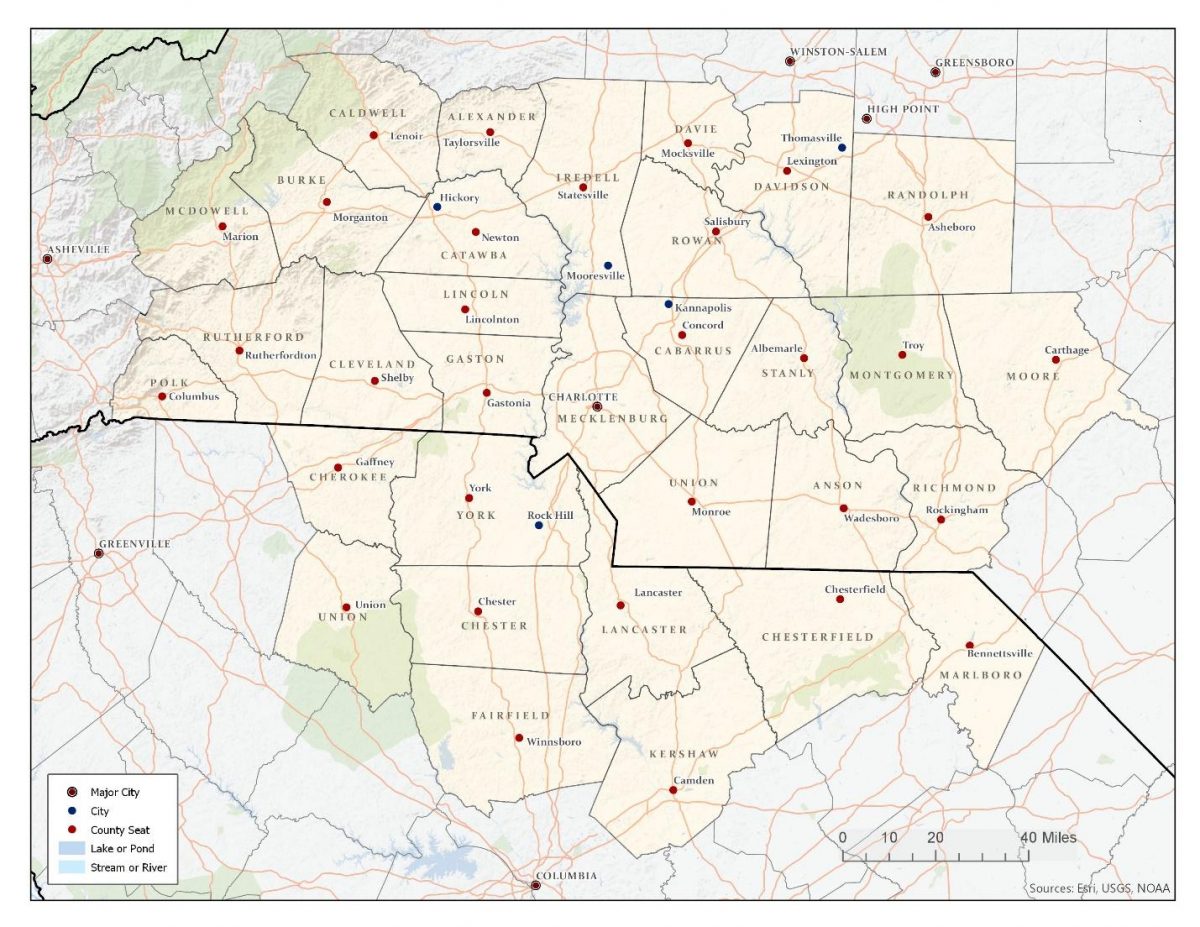A border problem? Unexpected ways the state line influences our behavior

We don’t often think about crossing state lines. Other than changes in gas prices or the availability of fireworks, there’s little visible difference as you cross from North Carolina into South Carolina, or vice versa.
This similarity was one of the fundamental assumptions of our Carolinas Urban-Rural Connection project – we expected our 32-county region to be economically and culturally cohesive, despite spanning two states.
And that’s what we found, for the most part. Our analysis of commuting patterns did not detect any friction produced by crossing the state line. To our great benefit, the region is a single labor market where residents find employment without regard to zip code.
Unexpectedly, however, we found evidence that the state line does impede recreational and shopping trips within our region. The first indication of this trend came from examining the patronage of the 2017 Cleveland County Fair.
By examining the residential locations of fair attendees, we found that South Carolina residents were much less likely to attend the fair, despite their close proximity to the festivities. This finding encouraged us to dig deeper into how the region’s residents see the border when they make non-work trips.

Attendees at the Cleveland County Fair are much less likely to come from South Carolina than their proximity would indicate. That suggests the state line may be a psychological barrier. Map: Katie Zager, using UberMedia data.
To do this, we assembled anonymized cell-phone tracking data of residents of the project region for the week of Sept. 25-Oct. 1, 2017. We examined more than 270,000 trips to monitor the flow of residents through the region as they traveled between home and work, as well as running errands throughout the day. These data verified that the border has no influence on the probability of making a work-trip.
Weekend trips revealed somewhat different travel patterns. After controlling for distance from the state line, we found that trips made on Saturday were 73 percent less likely to cross into another state than on a typical weekday. And the odds of a trip being interstate were even lower on Sundays.
The Carolinas Urban-Rural ConnectionA special project from the UNC Charlotte Urban Institute |
|---|
So when it comes to recreation or worship it appears that our sense of community is connected to or state of residence. We found our ties to home limit our mobility on discretionary trips.
The state border is clearly not a physical boundary. More likely, it is a barrier to the flow of information. Marketing messages may be focused on a single state, and personal preferences in consumption, recreation and leisure may be biased towards your home state – something that is very clear in the case of BBQ.
The big question is whether this matters. Unfortunately, that is difficult to answer at this point. At the margins, the border bias reduces the efficiency of our region. Residents may overlook nearby recreational or shopping opportunities simply because they are on the wrong side of the state line. A regional economy of equal size, but in a single state, would be less fragmented in terms of its resident’s behavior.
In another sense, these findings tell us that a sense of community matters. Carolinas Urban-Rural Connection region residents are voting with their feet to spend their weekends in the places they most closely identify with. While mainstream economic theory tells us that inefficiencies like this are bad, it’s tough to find fault in community attachment, particularly when these sorts of quirks help make our community unique.

The Carolinas Urban-Rural Connection study area covers 32 counties in North Carolina and South Carolina. Map: Katie Zager